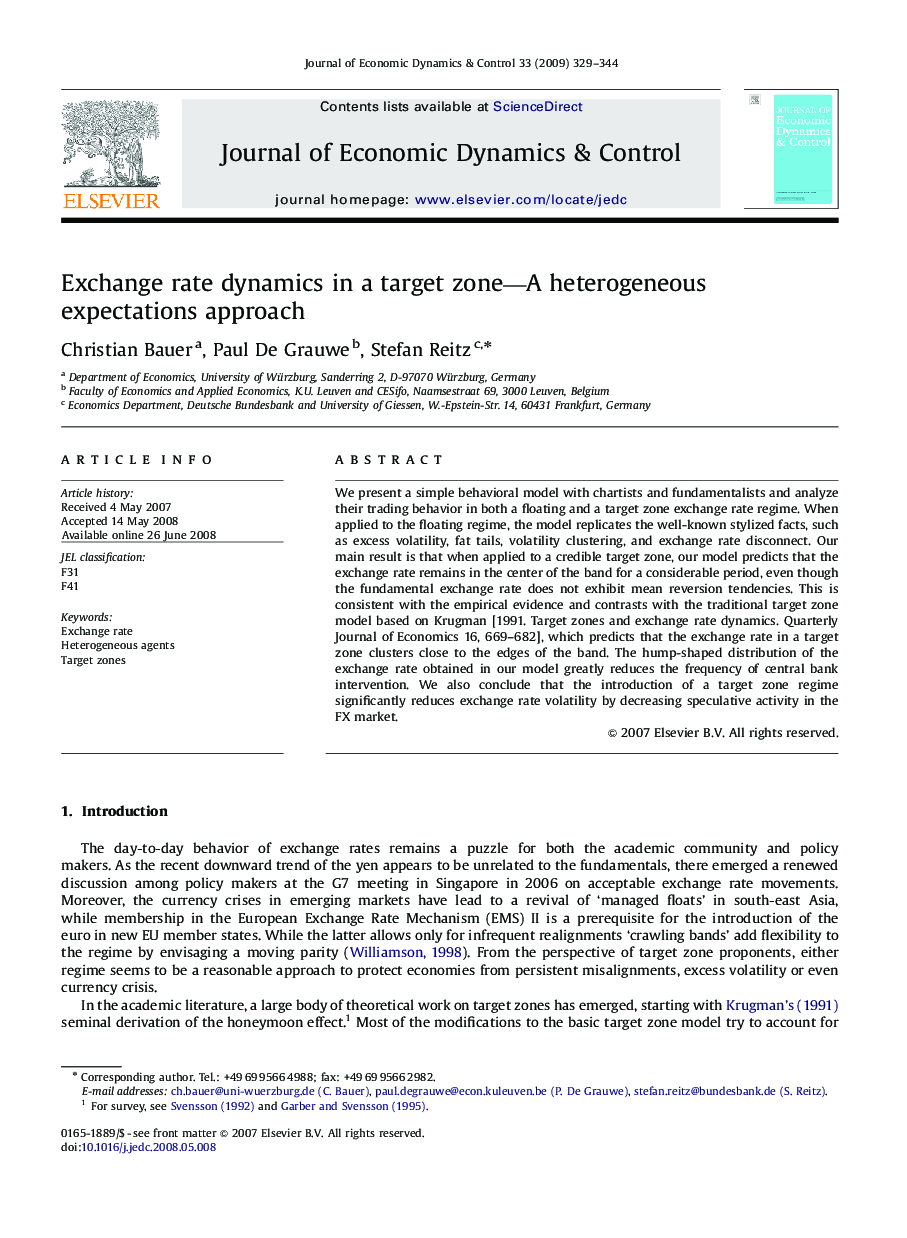| Article ID | Journal | Published Year | Pages | File Type |
|---|---|---|---|---|
| 5099107 | Journal of Economic Dynamics and Control | 2009 | 16 Pages |
Abstract
We present a simple behavioral model with chartists and fundamentalists and analyze their trading behavior in both a floating and a target zone exchange rate regime. When applied to the floating regime, the model replicates the well-known stylized facts, such as excess volatility, fat tails, volatility clustering, and exchange rate disconnect. Our main result is that when applied to a credible target zone, our model predicts that the exchange rate remains in the center of the band for a considerable period, even though the fundamental exchange rate does not exhibit mean reversion tendencies. This is consistent with the empirical evidence and contrasts with the traditional target zone model based on Krugman [1991. Target zones and exchange rate dynamics. Quarterly Journal of Economics 16, 669-682], which predicts that the exchange rate in a target zone clusters close to the edges of the band. The hump-shaped distribution of the exchange rate obtained in our model greatly reduces the frequency of central bank intervention. We also conclude that the introduction of a target zone regime significantly reduces exchange rate volatility by decreasing speculative activity in the FX market.
Related Topics
Physical Sciences and Engineering
Mathematics
Control and Optimization
Authors
Christian Bauer, Paul De Grauwe, Stefan Reitz,
